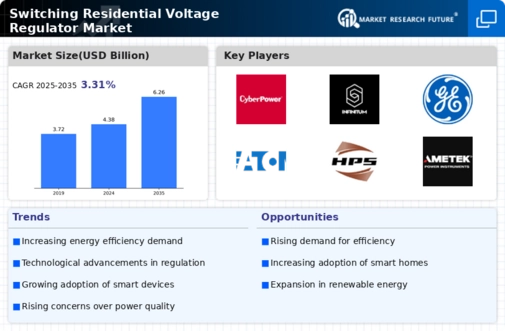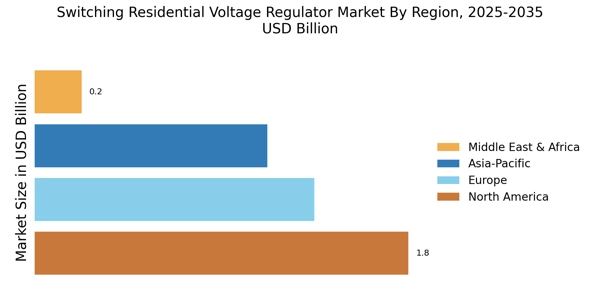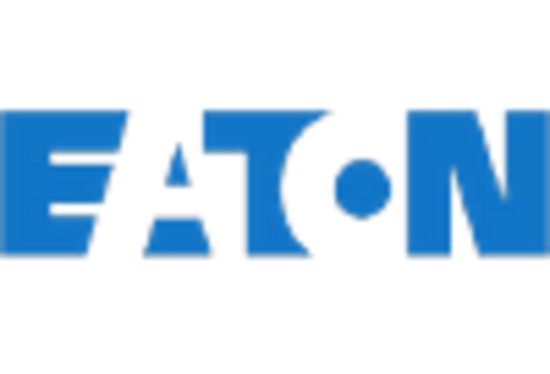Growth in Smart Home Technology
The proliferation of smart home technology significantly influences the Switching Residential Voltage Regulator Market. As more households adopt smart devices, the need for reliable voltage regulation becomes paramount. Smart appliances often require stable voltage levels to function effectively, and fluctuations can lead to malfunctions or reduced lifespan. The integration of voltage regulators with smart home systems ensures that devices operate within their optimal voltage range, enhancing their efficiency and reliability. Market data indicates that the smart home market is projected to grow at a compound annual growth rate of over 25% in the coming years, further driving the demand for switching residential voltage regulators.
Rising Demand for Energy Efficiency
The increasing emphasis on energy efficiency is a primary driver for the Switching Residential Voltage Regulator Market. As consumers become more environmentally conscious, they seek solutions that minimize energy waste. Voltage regulators play a crucial role in optimizing energy consumption by ensuring that electrical devices receive a stable voltage supply. This not only enhances the performance of appliances but also reduces energy costs. According to recent data, energy-efficient devices can lead to savings of up to 30% on electricity bills. Consequently, the demand for switching residential voltage regulators is expected to rise as households aim to lower their carbon footprint while maintaining optimal energy usage.
Regulatory Support for Energy Management
Government regulations aimed at promoting energy management and efficiency are driving the Switching Residential Voltage Regulator Market. Many countries have implemented policies that encourage the adoption of energy-efficient technologies, including voltage regulators. These regulations often include incentives for homeowners to invest in energy-saving devices, which can include switching residential voltage regulators. As regulatory frameworks evolve to support sustainable energy practices, the market for these devices is likely to expand. Data from various energy agencies indicates that compliance with energy efficiency standards can lead to significant reductions in energy consumption, further propelling the demand for effective voltage regulation solutions.
Increased Adoption of Renewable Energy Sources
The transition towards renewable energy sources is reshaping the Switching Residential Voltage Regulator Market. As more households install solar panels and wind turbines, the variability in energy supply necessitates effective voltage regulation. Switching residential voltage regulators help manage the fluctuations in voltage that can occur with renewable energy systems, ensuring a consistent power supply to the home. This is particularly important as the share of renewable energy in residential energy consumption continues to rise. Recent statistics suggest that residential solar installations have increased by over 50% in the last few years, indicating a growing market for voltage regulation solutions that can accommodate these changes.
Technological Innovations in Voltage Regulation
Technological advancements in voltage regulation are a key driver for the Switching Residential Voltage Regulator Market. Innovations such as digital control systems and advanced semiconductor materials have enhanced the performance and reliability of voltage regulators. These technologies allow for more precise voltage control, improved efficiency, and reduced energy losses. As manufacturers continue to invest in research and development, the introduction of next-generation voltage regulators is expected to stimulate market growth. Market analysis shows that the adoption of advanced voltage regulation technologies can lead to efficiency improvements of up to 20%, making them increasingly attractive to consumers seeking reliable energy solutions.


















Leave a Comment